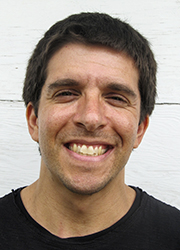Neurodesign fellowship aims to build a medtech ecosystem in Cleveland through collaboration
 Courtesy of Mind Matter NewsThe Cleveland NeuroDesign Innovation Fellowship is completing a pilot designed to turn neurosurgeons and biomedical engineers into successful innovators.
Courtesy of Mind Matter NewsThe Cleveland NeuroDesign Innovation Fellowship is completing a pilot designed to turn neurosurgeons and biomedical engineers into successful innovators.
A Cleveland-based initiative aims to harness local medical technology in seeding a flourishing entrepreneurial workforce.
The Cleveland NeuroDesign Innovation Fellowship—created through a partnership between Cleveland Clinic and Case Western Reserve University—is completing a pilot program designed to turn neurosurgeons and biomedical engineers into successful innovators.
A four-person cohort completed the 10-month program this week, culminating in a final public presentation scheduled for today, Thursday, May 20 at 4p.m., with three of the four fellows who built out a medical device startup based on the prevention of hospital-acquired infections.
“Our goal for the program is not necessarily starting companies,” says Andrew Cornwell, associate director of the Case-Coulter Translational Research Partnership and a member of the executive team spearheading the fellowship. “It’s a rare event that we’re excited about. But we want to develop a workforce in Cleveland that can take our medtech resources and turn them into companies.”
The program embeds participants into clinical practice to identify unmet innovation needs. Fellows are taken through a design and build process, followed by a prototype implementation ideally resulting in commercialization.
Centering on neuroscience is what makes the program unique among healthcare biodesign fellowships in the U.S., notes Cornwell. According to organizers, the program is the first established neurotech-based health innovation initiative in the world.
“Combining the biodesign curriculum and access our fellows have is what makes this special,” Cornwell says.
The initial cohort of four fellows started the program last September, funded by the Clinic’s Neurological Institute, the Provost Fund at CWRU,and an anonymous donor. Participants are early-career professionals deriving from backgrounds that include neurosurgery and biomedical engineering. Diversity was a watchword when bringing in the first group of fellows last year, remarks Cornwell.
“We weren’t looking for special titles or backgrounds, but we did want to cover a set of skills,” he says. “We picked this team to bring those skills together, and we’re happy with what they’ve accomplished.”
Utilizing the Stanford Biodesign Method, the fellowship offers hands-on guidance from a team of faculty experts knowledgeable in product design, financial strategy, and creating an effective operational agreement. Fellows produced 400 clinical needs, eventually whittling that list into two commercial-ready prototypes
Company creation is exciting, but it’s the culture of collaboration that gets the fellowship leaders particularly pumped up.
 Stanford Biodesign Method - Stanford Byers Center for Biodesign
Stanford Biodesign Method - Stanford Byers Center for Biodesign
Though Cleveland’s current medical technology ecosystem is talented and hard-working, it needs to grow in order to draw crucial venture capital to the region.
“We want to build a stable of entrepreneurs who are starting and exiting companies, then going to institutions sitting on files of IP (intellectual property) and finding a new company to start,” Cornwell says. “Having a group of talented executives here is the goal.”
With the first cohort in the books, officials will take a few months to study what worked (and what didn’t) over the course of the pilot. The COVID-19 pandemic didn’t slow down studies, as staff were encouraged to meet virtually or in-person with fellows.
By the fellowship’s next scheduled iteration in September 2022, the overarching mission of better patient care will once again be at the forefront.
“This program is a model for collaborative support at every level,” says Cornwell. “That’s the reason for my optimism in its longer-term success. Collaboration is the key to the success for a program like this.”

